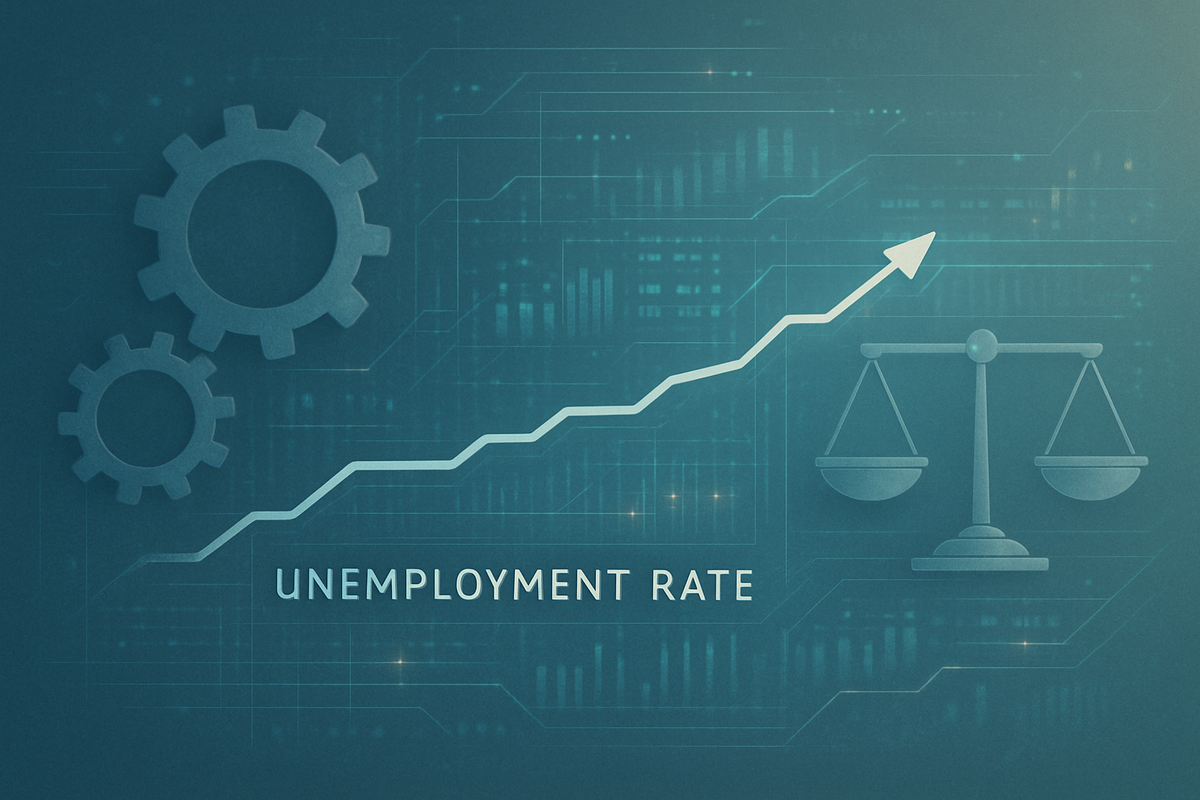
Chicago, IL – October 2, 2025 – The financial markets are closely scrutinizing new data points as the US economy navigates a complex landscape of inflation concerns and growth projections. In a recent and particularly timely development, the Federal Reserve Bank of Chicago (Chicago Fed) released its "real-time" estimate for the US unemployment rate for September 2025, clocking in at 4.34%. This projection, which suggests the labor market remains remarkably steady, has emerged as a critical indicator, especially given a government shutdown that has reportedly delayed the official Bureau of Labor Statistics (BLS) report.
This early reading from the Chicago Fed offers a crucial glimpse into the health of the American workforce. A steady unemployment rate, holding firm around the 4.3% mark, indicates that despite various economic headwinds, the labor market is not experiencing a rapid deterioration. It provides a measure of reassurance to policymakers and investors alike, suggesting that the foundations of employment remain robust, even as the broader economic narrative continues to unfold.
A Deeper Dive into September's Labor Landscape
The Chicago Fed's estimate of 4.34% for September 2025 is derived from its twice-monthly Labor Market Indicators, which ingeniously combine real-time private sector data with available official labor statistics. This methodology proved invaluable in the face of a government shutdown, which has reportedly postponed the release of the official BLS jobs report, leaving a temporary void in crucial economic data. The estimate signals that while the hiring rate for unemployed workers saw a slight dip and the rate of layoffs and other job separations edged up marginally, these movements were not substantial enough to trigger a significant upward shift in the overall unemployment rate.
This real-time gauge stands in close proximity to the Federal Open Market Committee's (FOMC) own projections. The FOMC's Summary of Economic Projections (SEP) for September 2025 indicated a median unemployment rate of 4.5% for the fourth quarter of 2025. The Chicago Fed's September estimate, being slightly lower at 4.34%, could suggest that the labor market is performing marginally better than the broader Q4 forecast from the Federal Reserve, which encompasses the entire final quarter of the year. Historically, such real-time estimates gain prominence during periods of official data delays, providing the market with an immediate, albeit unofficial, pulse on economic conditions. The Chicago Fed (FED) plays a vital role in providing regional economic insights that feed into the broader national economic policy discussions of the Federal Reserve System.
Navigating the Economic Currents: Potential Winners and Losers
A stable unemployment rate at 4.3% carries significant implications for various sectors and public companies. Companies reliant on consumer spending, particularly in the consumer discretionary sector, could see continued resilience. If employment remains strong, consumers are more likely to maintain spending on non-essential goods and services. For instance, retailers like Amazon.com (NASDAQ: AMZN) and Target Corporation (NYSE: TGT), along with leisure and hospitality giants such as Marriott International (NASDAQ: MAR), could benefit from sustained consumer confidence and purchasing power.
Conversely, a tight labor market, even a steady one, can pose challenges for businesses struggling with labor costs. Companies in sectors with high labor intensity, such as manufacturing or certain service industries, might continue to face pressure on their profit margins due to elevated wage growth. Staffing agencies, however, like Robert Half International (NYSE: RHI) or ManpowerGroup (NYSE: MAN), could see sustained demand for their services as businesses seek to navigate a competitive hiring environment. Furthermore, the Federal Reserve's ongoing battle against inflation means that a robust labor market could potentially delay interest rate cuts, impacting interest-rate-sensitive sectors such as real estate and construction, including companies like D.R. Horton (NYSE: DHI).
Broader Economic Implications and Historical Context
The Chicago Fed's real-time estimate for September 2025 fits into a broader narrative of the Federal Reserve's ongoing efforts to achieve a "soft landing" – bringing inflation under control without triggering a severe recession. A steady unemployment rate suggests that the economy might be achieving this delicate balance, at least on the employment front. If the labor market remains robust, it provides the Fed with more flexibility to maintain its current monetary policy stance, or even consider further tightening if inflation persists, without immediately fearing a significant spike in joblessness. This contrasts with historical periods where aggressive monetary tightening often led to sharp increases in unemployment.
This event also highlights the increasing importance of alternative and real-time data sources in an era where official data can be subject to delays or revisions. The Chicago Fed's methodology provides a valuable precedent for how financial institutions and policymakers can adapt to unforeseen circumstances, such as government shutdowns, to maintain a clear understanding of economic conditions. Regulatory bodies will continue to monitor the interplay between employment data, inflation metrics, and wage growth, as these factors collectively influence decisions on interest rates and broader economic policy. The sustained strength in employment, even with a slight softening at the margins, underscores the structural changes in the post-pandemic labor market, where demand for workers has remained remarkably resilient.
What Comes Next: Navigating the Path Ahead
In the short term, all eyes will be on the eventual release of the official BLS jobs report for September 2025. Should the official figures largely corroborate the Chicago Fed's real-time estimate, it would solidify the narrative of a resilient labor market. However, any significant deviation could introduce volatility into the markets, prompting re-evaluations of economic forecasts and monetary policy expectations. Companies across various sectors will need to adapt their strategic planning based on whether the labor market continues its steady trajectory or shows signs of acceleration or deceleration.
Looking further ahead, the trajectory of the unemployment rate will be a critical determinant for the Federal Reserve's monetary policy decisions in late 2025 and into 2026. A persistently tight labor market could fuel wage growth, potentially making the Fed's inflation fight more challenging and delaying anticipated interest rate cuts. Conversely, a gradual and controlled increase in unemployment, without a sharp spike, might be viewed by the Fed as a necessary cooling of the economy. Market opportunities could emerge in sectors that benefit from either continued economic stability or those positioned to thrive in a higher-for-longer interest rate environment, such as financial services firms like JPMorgan Chase & Co. (NYSE: JPM).
Comprehensive Wrap-Up: A Resilient Labor Market in Focus
The Chicago Fed's real-time estimate of 4.34% for the US unemployment rate in September 2025 offers a pivotal insight into the current state of the labor market. It paints a picture of resilience and stability, suggesting that the economy is maintaining a steady course on the employment front, even amidst the complexities of inflation and delayed official data. This estimate, particularly significant given the reported government shutdown, reinforces the idea that the labor market is not experiencing a rapid downturn, providing a measure of confidence to businesses and consumers.
Moving forward, investors should closely monitor the forthcoming official BLS data and subsequent Federal Reserve communications. The interplay between unemployment figures, wage growth, and inflation will continue to be the primary drivers of market sentiment and monetary policy decisions. The sustained strength of the labor market, as indicated by the Chicago Fed, suggests that while the Fed's fight against inflation is ongoing, it is doing so from a position of relative labor market strength. What remains to be seen is how long this delicate balance can be maintained and what further adjustments the economy, and indeed public companies, will need to make in the coming months.
This content is intended for informational purposes only and is not financial advice.








